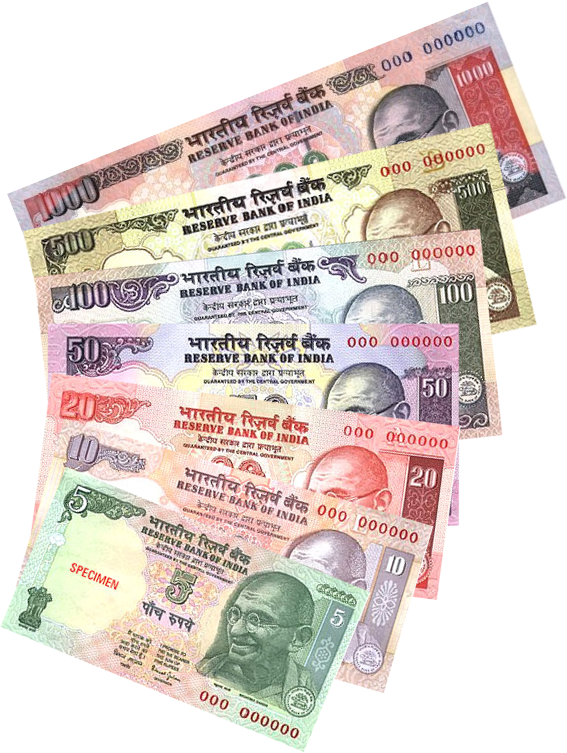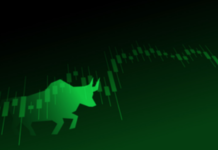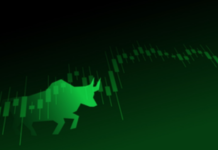By Rohit Vaid
New Delhi–The adverse impact of demonetisation, along with a volatile rupee and outflows might prove a drag on the Indian equity markets during the early part of 2017, but domestic exchanges are expected to bounce back on sound economic fundamentals and the potential for further reforms.
Besides, progress on the rollout of GST (goods and services tax) and global cues such as crude oil prices, along with the unexpected economic policy stand of the new US administration, are expected to be major themes during the year.
Nevertheless, a lower inflation rate, the possibility of more rate cuts, an increase in infrastructure spending, fiscal consolidation and progress on corporate tax reforms are expected to boost investors’ sentiments going forward.
 “India is seen relatively better placed as compared to its emerging market peers and it will continue to attract foreign players. It is expected that the market would move upward by more than 15 per cent in the year 2017,” said D.K. Aggarwal, Chairman and Managing Director, SMC Investments and Advisors, a leading brokerage and financial advisory.
“India is seen relatively better placed as compared to its emerging market peers and it will continue to attract foreign players. It is expected that the market would move upward by more than 15 per cent in the year 2017,” said D.K. Aggarwal, Chairman and Managing Director, SMC Investments and Advisors, a leading brokerage and financial advisory.
Other market observers pointed out that investors will eye the possibility of further economic reforms, key lending rate cuts and quarterly earnings in the aftermath of the demonetisation move.
“This time markets are keenly looking forward to more reforms that could bring some cheer, to ease the pain of demonetisation, and the possible disruption following the GST implementation,” Anand James, Chief Market Strategist, Geojit BNP Paribas Financial Services, told IANS.
“The fourth quarter of FY17 earnings would be in more focus as it would have the full quarter impact of demonetisation.”
Experts reassured that Indian domestic markets, which have witnessed a southward journey since the announcement of the demonetisation scheme, are expected to quickly recoup.
Since the demonetisation announcement, the domestic markets have fallen more than seven per cent as investors have been cautious about the impact of the scheme on India Inc’s profits.
“This is temporary, the effect could last a few months. This may create a low base for FY17 on which FY18 growth could look sharp,” Deepak Jasani, Head – Retail Research, HDFC Securities, told IANS.
On the global front, investors are expected to closely follow the possibility of global crude oil prices settling above $60 per barrel, and the unexpected policies of the new US administration under new President Donald Trump.
“All possibilities exist that markets are stepping into yet another eventful year, driven by domestic and by no lesser measure by global events,” James elaborated.
“Few other political events in the offing are the elections in France, Germany, Iran, South Korea and Hong Kong, and the five-yearly Communist party congress meeting in China.”
James added that the markets will cautiously watch the elections in France and Germany as the future actions in the Euro area are ambiguous after Brexit last year.
“The growth pace of the Chinese economy will be another crucial element eyes around the world will watch especially when the rise of Chinese consumer sentiments is seen as an important economic trend,” said James.
Despite uncertain global economic scenario, Jasani said that Indian equities will still remain an attractive story within emerging markets for foreign investors.
“Indian markets could make some sort of a bottom in the early part of 2017 and then gradually rise with some intermittent corrections thrown in,” Jasani explained.
“However, a lot depends on interest rate moves in the US and the general fancy (risk-on trade) towards emerging markets as a whole.”
According to Dhruv Desai, Director and Chief Operating Officer of Tradebulls, strong US dollar and demonetisation will have an adverse impact on FII (foreign institutional investors) inflows.
“We may see the equity market struggle in the first half of 2017 on account of dismissal corporate earnings because of demonetisation and strength in the US dollar,” Desai noted.
“The strong US dollar will slow the inflows of FII’s (foreign institutional investors) in emerging markets. Any sort of positive trend is expected only after the second half of the year.”
On the rupee front, experts predict the Indian currency will swing in a broad range of 66.50/66.05 to 68.20/85 in 2017.
“A max reach towards 69.80-70.00 is possible — considering new developments in Europe and the UK region, Trump-led policies when he moves into the White House… and carefully watching how the South China Sea issue unfolds,” Hiren Sharma, a senior independent currency analyst, told IANS.
“Hence, for 2017 — a bottom of 66.05 to a high of 69.80/70.00 may be seen.”
The domestic equities markets inched up during 2016, despite facing massive volatility and foreign fund outflows.
The two key indices closed between 1.95 per cent and three per cent higher, with nearly a third of the gains coming on the last few days of trading.
The 30-scrip Sensitive Index (Sensex) of the S&P BSE gained 1.95 per cent compared to a loss of five per cent in 2015.
The wider 51-scrip Nifty of the NSE rose by 3.01 per cent compared to a loss of 4.1 per cent in 2015. (IANS)







